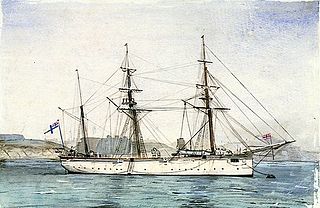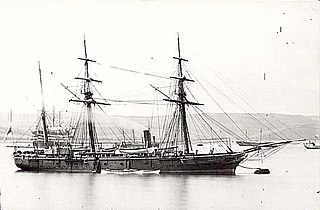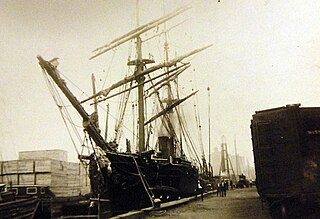
In the 18th century and most of the 19th, a sloop-of-war in the Royal Navy was a warship with a single gun deck that carried up to eighteen guns. The rating system covered all vessels with 20 guns and above; thus, the term sloop-of-war encompassed all the unrated combat vessels, including the very small gun-brigs and cutters. In technical terms, even the more specialised bomb vessels and fireships were classed as sloops-of-war, and in practice these were employed in the sloop role when not carrying out their specialised functions.

Steam frigates and the smaller steam corvettes, steam sloops, steam gunboats and steam schooners, were steam-powered warships that were not meant to stand in the line of battle. There were some exceptions like for example the French Napoléon class steam ship of the line was meant to stand in the line of battle, making it the world's first steam battleship. The first such ships were paddle steamers. Later on the invention of screw propulsion enabled construction of steam-powered versions of the traditional ships of the line, frigates, corvettes, sloops and gunboats.

HMCS Rainbow was an Apollo-class protected cruiser built for Great Britain's Royal Navy as HMS Rainbow entering service in 1892. Rainbow saw time in Asian waters before being placed in reserve in 1909. In 1910 the cruiser was transferred to the Royal Canadian Navy for service on the west coast. At the outbreak of the First World War, Rainbow was the only major Canadian or British warship on the western coast of North America. Due to age, the cruiser was taken out of service in 1917 and sold for scrap in 1920 and broken up.

HMS Shearwater was a Condor-class sloop launched in 1900. She served on the Pacific Station and in 1915 was transferred to the Royal Canadian Navy as HMCS Shearwater, serving as a submarine depot ship until 1919. She was sold to the Western Shipping Company in May 1922 and renamed Vedas.

HMS Niobe was a ship of the Diadem class of protected cruisers in the Royal Navy. She served in the Boer War and was then given to Canada as the second ship of the newly created Naval Service of Canada as HMCS Niobe. The Naval Service of Canada became the Royal Canadian Navy in August 1911. The ship was nearly lost when she went aground off Cape Sable Island, Nova Scotia overnight 30–31 July 1911. Repairs were completed at the end of 1912 and the ship returned to service in late 1914. During the First World War, Niobe patrolled the approaches to the St. Lawrence River and then joined the Royal Navy's 4th Cruiser Squadron to patrol off New York City. The cruiser returned to Halifax, Nova Scotia on 17 July 1915 and never put to sea again. Niobe was paid off in September and served as a depot ship in Halifax. Damaged in the 1917 Halifax Explosion, she was sold for scrap and broken up in the 1920s.

HMS Reindeer was a Royal Navy Mariner-class composite screw gunvessel of 8 guns.

HMS Cormorant was an Osprey-class sloop launched at Chatham on 12 September 1877 and later the receiving ship at Gibraltar. She was renamed Rooke in 1946 and broken up in 1949.

The Algerine-class gunboats were a class of six 3-gun wooden gunboats built for the Royal Navy in 1857. A further pair were built in India for the Bombay Marine in 1859.

The Phoenix class was a two-ship class of 6-gun screw steel sloops built for the Royal Navy in 1895. Both ships participated in the suppression of the Boxer Rebellion, but Phoenix was destroyed in a typhoon while alongside in Hong Kong in 1906. Algerine became a depot ship at Esquimalt, was sold in 1919, and was finally wrecked in 1923.

The Condor class was a six-ship class of 10-gun screw steel sloops built for the Royal Navy between 1898 and 1900. Condor foundered in a gale, prompting the Royal Navy to abandon sailing rigs for its ships. The last of the class, Mutine, survived until 1932 as a Royal Naval Volunteer Reserve drill ship.

HMS Mariner was the name-ship of the Royal Navy Mariner-class composite screw gunvessel of 8 guns.

HMS Melita was a Royal Navy Mariner-class composite screw sloop of 8 guns, launched in 1888 and commissioned in 1892. She was the only significant Royal Navy warship ever to be built in Malta Dockyard, She was renamed HMS Ringdove in 1915 as a salvage vessel and in 1920 was sold to the Falmouth Docks Company, which changed her name to Ringdove's Aid. She was sold again in 1926 to the Liverpool & Glasgow Salvage Association, renamed Restorer, and finally broken up in 1937, 54 years after her keel was laid.

HMS Icarus was a Mariner-class composite screw gunvessel of 8 guns, and the third Royal Navy vessel to carry the name. She was launched in 1885 at Devonport and sold in 1904.

HMS Penguin was an Osprey-class sloop. Launched in 1876, Penguin was operated by the Royal Navy from 1877 to 1881, then from 1886 to 1889. After being converted to a survey vessel, Penguin was recommissioned in 1890, and operated until 1908, when she was demasted and transferred to the Australian Commonwealth Naval Forces for use as a depot and training ship in Sydney Harbour. After this force became the Royal Australian Navy, the sloop was commissioned as HMAS Penguin in 1913. Penguin remained in naval service until 1924, when she was sold off and converted into a floating crane. The vessel survived until 1960, when she was broken up and burnt.

HMS Phoenix was a Royal Navy Phoenix-class steel screw sloop. She was launched at Devonport in 1895, saw action in China during the Boxer Rebellion, and later served on the Pacific Station. She had the misfortune to be alongside a coaling pier in Hong Kong on 18 September 1906 when a typhoon struck the colony. She foundered and became a total loss.

HMS Mutine was a Doterel-class sloop of the Royal Navy, built at the Devonport Dockyard and launched on 20 July 1880. She became a boom defence vessel at Southampton in 1899 and was renamed Azov in 1904. She was sold after World War I.

HMS Arab was an Arab-class composite gunvessel built for the Royal Navy in 1874. She served in the East Indies and was sold in 1889.

HMS Lily was an Arab-class composite gunvessel built for the Royal Navy. She was launched in 1874, saw service in Chinese and North American waters, and was wrecked on the coast of Labrador on 16 September 1888.

HMS Pelican was an Osprey-class sloop built for the Royal Navy in the mid-1870s. She was launched in 1877 and was sold to the Hudson's Bay Company in 1901. She was scuttled in 1953.

HMS Wild Swan was an Osprey-class sloop built for the Royal Navy in the mid-1870s. She was launched in 1877 and became a base ship in 1904, being renamed Clyde. She was renamed Columbine in 1913 and was sold for breaking in 1920.





















